Md Hasan Shahriar
NoiSec: Harnessing Noise for Security against Adversarial and Backdoor Attacks
Jun 18, 2024Abstract:The exponential adoption of machine learning (ML) is propelling the world into a future of intelligent automation and data-driven solutions. However, the proliferation of malicious data manipulation attacks against ML, namely adversarial and backdoor attacks, jeopardizes its reliability in safety-critical applications. The existing detection methods against such attacks are built upon assumptions, limiting them in diverse practical scenarios. Thus, motivated by the need for a more robust and unified defense mechanism, we investigate the shared traits of adversarial and backdoor attacks and propose NoiSec that leverages solely the noise, the foundational root cause of such attacks, to detect any malicious data alterations. NoiSec is a reconstruction-based detector that disentangles the noise from the test input, extracts the underlying features from the noise, and leverages them to recognize systematic malicious manipulation. Experimental evaluations conducted on the CIFAR10 dataset demonstrate the efficacy of NoiSec, achieving AUROC scores exceeding 0.954 and 0.852 under white-box and black-box adversarial attacks, respectively, and 0.992 against backdoor attacks. Notably, NoiSec maintains a high detection performance, keeping the false positive rate within only 1\%. Comparative analyses against MagNet-based baselines reveal NoiSec's superior performance across various attack scenarios.
CANShield: Signal-based Intrusion Detection for Controller Area Networks
May 03, 2022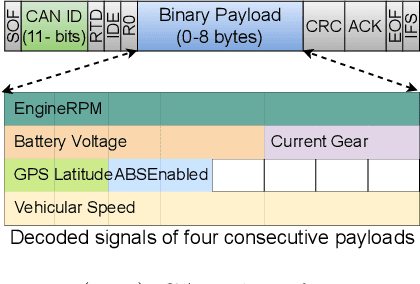


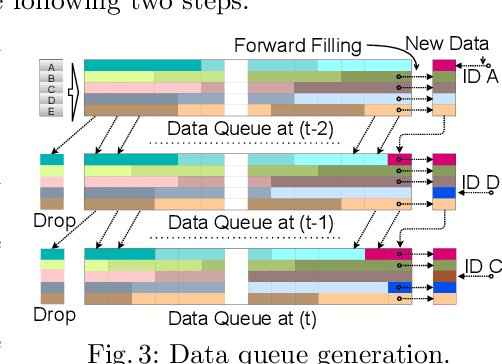
Abstract:Modern vehicles rely on a fleet of electronic control units (ECUs) connected through controller area network (CAN) buses for critical vehicular control. However, with the expansion of advanced connectivity features in automobiles and the elevated risks of internal system exposure, the CAN bus is increasingly prone to intrusions and injection attacks. The ordinary injection attacks disrupt the typical timing properties of the CAN data stream, and the rule-based intrusion detection systems (IDS) can easily detect them. However, advanced attackers can inject false data to the time series sensory data (signal), while looking innocuous by the pattern/frequency of the CAN messages. Such attacks can bypass the rule-based IDS or any anomaly-based IDS built on binary payload data. To make the vehicles robust against such intelligent attacks, we propose CANShield, a signal-based intrusion detection framework for the CAN bus. CANShield consists of three modules: a data preprocessing module that handles the high-dimensional CAN data stream at the signal level and makes them suitable for a deep learning model; a data analyzer module consisting of multiple deep autoencoder (AE) networks, each analyzing the time-series data from a different temporal perspective; and finally an attack detection module that uses an ensemble method to make the final decision. Evaluation results on two high-fidelity signal-based CAN attack datasets show the high accuracy and responsiveness of CANShield in detecting wide-range of advanced intrusion attacks.
A Novel Framework for Threat Analysis of Machine Learning-based Smart Healthcare Systems
Mar 05, 2021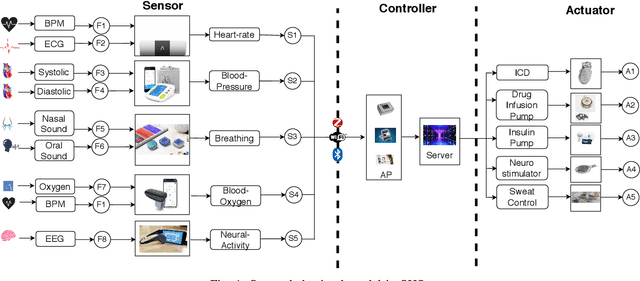


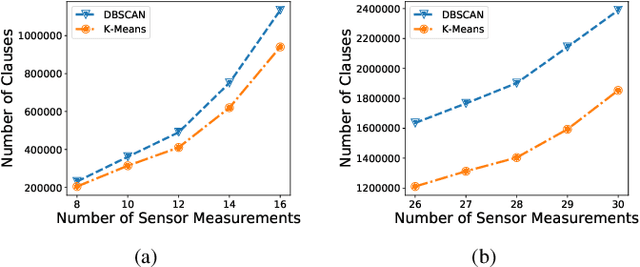
Abstract:Smart healthcare systems (SHSs) are providing fast and efficient disease treatment leveraging wireless body sensor networks (WBSNs) and implantable medical devices (IMDs)-based internet of medical things (IoMT). In addition, IoMT-based SHSs are enabling automated medication, allowing communication among myriad healthcare sensor devices. However, adversaries can launch various attacks on the communication network and the hardware/firmware to introduce false data or cause data unavailability to the automatic medication system endangering the patient's life. In this paper, we propose SHChecker, a novel threat analysis framework that integrates machine learning and formal analysis capabilities to identify potential attacks and corresponding effects on an IoMT-based SHS. Our framework can provide us with all potential attack vectors, each representing a set of sensor measurements to be altered, for an SHS given a specific set of attack attributes, allowing us to realize the system's resiliency, thus the insight to enhance the robustness of the model. We implement SHChecker on a synthetic and a real dataset, which affirms that our framework can reveal potential attack vectors in an IoMT system. This is a novel effort to formally analyze supervised and unsupervised machine learning models for black-box SHS threat analysis.
Machine Learning in Generation, Detection, and Mitigation of Cyberattacks in Smart Grid: A Survey
Sep 01, 2020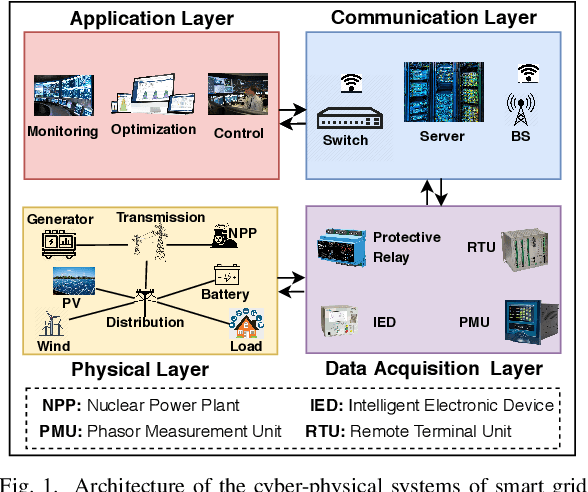



Abstract:Smart grid (SG) is a complex cyber-physical system that utilizes modern cyber and physical equipment to run at an optimal operating point. Cyberattacks are the principal threats confronting the usage and advancement of the state-of-the-art systems. The advancement of SG has added a wide range of technologies, equipment, and tools to make the system more reliable, efficient, and cost-effective. Despite attaining these goals, the threat space for the adversarial attacks has also been expanded because of the extensive implementation of the cyber networks. Due to the promising computational and reasoning capability, machine learning (ML) is being used to exploit and defend the cyberattacks in SG by the attackers and system operators, respectively. In this paper, we perform a comprehensive summary of cyberattacks generation, detection, and mitigation schemes by reviewing state-of-the-art research in the SG domain. Additionally, we have summarized the current research in a structured way using tabular format. We also present the shortcomings of the existing works and possible future research direction based on our investigation.
G-IDS: Generative Adversarial Networks Assisted Intrusion Detection System
Jun 01, 2020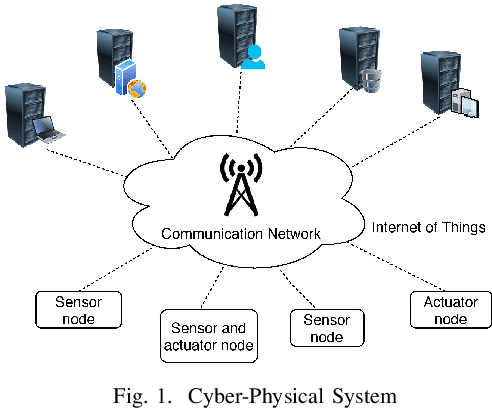
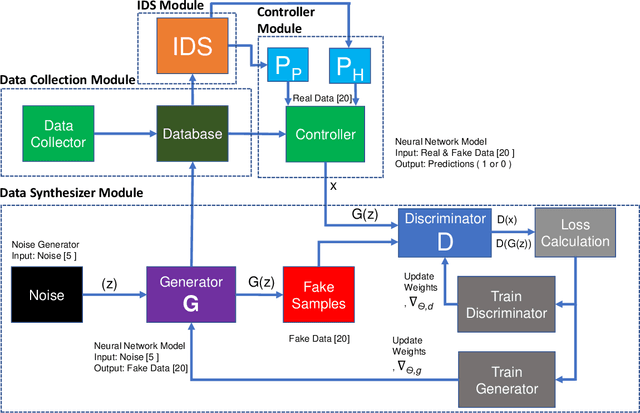
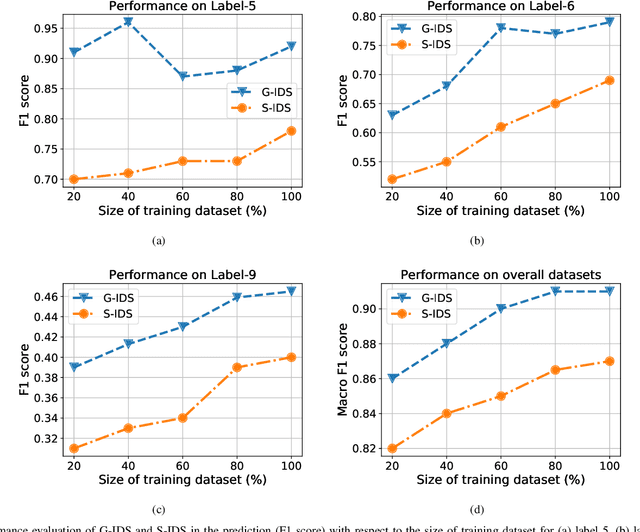
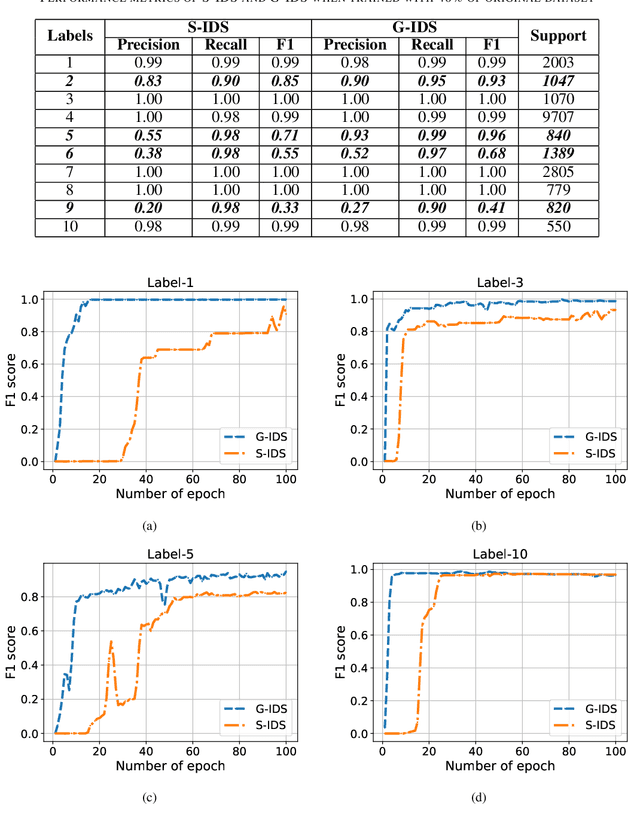
Abstract:The boundaries of cyber-physical systems (CPS) and the Internet of Things (IoT) are converging together day by day to introduce a common platform on hybrid systems. Moreover, the combination of artificial intelligence (AI) with CPS creates a new dimension of technological advancement. All these connectivity and dependability are creating massive space for the attackers to launch cyber attacks. To defend against these attacks, intrusion detection system (IDS) has been widely used. However, emerging CPS technologies suffer from imbalanced and missing sample data, which makes the training of IDS difficult. In this paper, we propose a generative adversarial network (GAN) based intrusion detection system (G-IDS), where GAN generates synthetic samples, and IDS gets trained on them along with the original ones. G-IDS also fixes the difficulties of imbalanced or missing data problems. We model a network security dataset for an emerging CPS using NSL KDD-99 dataset and evaluate our proposed model's performance using different metrics. We find that our proposed G-IDS model performs much better in attack detection and model stabilization during the training process than a standalone IDS.
 Add to Chrome
Add to Chrome Add to Firefox
Add to Firefox Add to Edge
Add to Edge